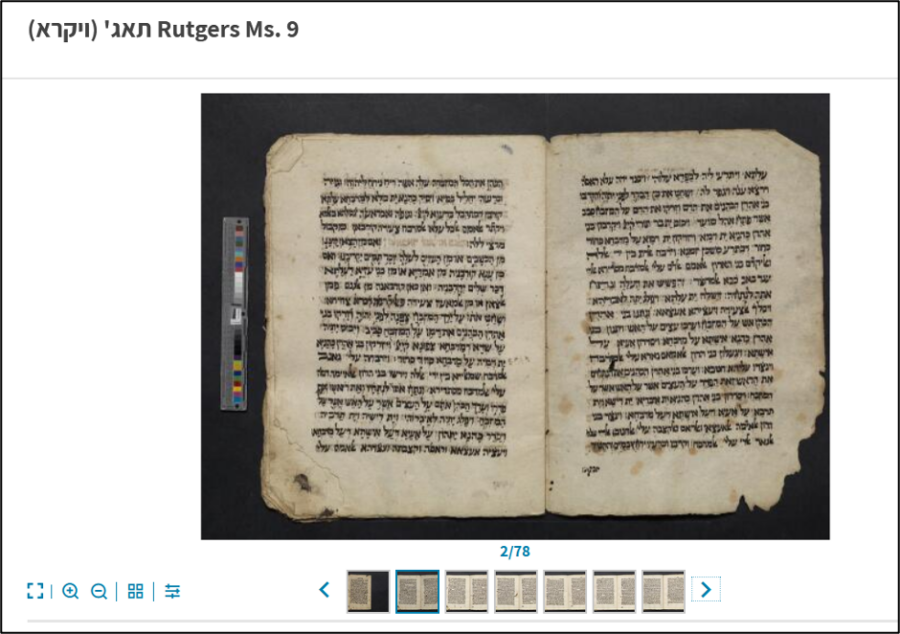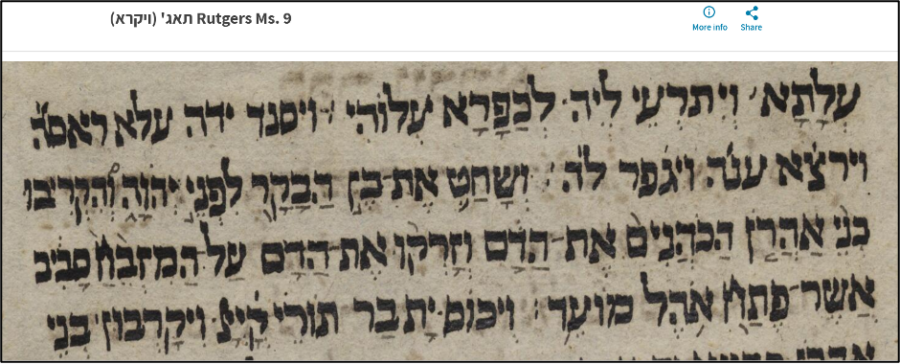by Gary A. Rendsburg
Blanche and Irving Laurie Chair in Jewish History
Department of Jewish Studies
Two-plus years after we began the digital imaging process, we now are able to see the fruits of our labor. A search for ‘Rutgers’ at the Ktiv website yields the requisite number of hits: 63 in total (because some of the documents contain multiple compositions, and thus they have been sub-divided by the Ktiv cataloguers, in order to maximize search capacity). See here for the screen shot indicating the 63 hits, with details about the first two manuscripts (MS 4 and MS 17).
To illustrate how the Ktiv website works in greater detail, I have elected to use Robison MS 9, with the main catalogue entry seen here:

The Hebrew heading informs the user that this document contains the book of Leviticus – though there is more.
If one clicks on ‘Detailed Information’, one is directed to this screen:

where one learns that the text includes not only the Hebrew original, but also the Aramaic translation (known as Targum Onqelos) and the Judeo-Arabic translation (known as the Tafsir, produced by Sa‘adya Gaon).
If one returns to the main catalogue entry and clicks on the ‘View Manuscript’ link (see two images above), one reaches the digital images themselves, with page after page available for viewing, as exemplified here:

The various options in the bottom left include the zoom feature, which – given the high-resolution images – allows the user to see as much detail as one would like. For example, see here for the screen capture of the four lines in the upper right (= the beginning of folio 1v):

Though in fact one can zoom even further – see here, for example, for the last four words on the first line (recalling that Hebrew, Aramaic, and Arabic are read from right to left):

Multiply this exercise by the hundreds, nay, by the thousands, and one can gain a sense of how our Hebrew manuscripts housed here in New Brunswick are now available to students, scholars, and researchers around the world.
to be continued …
